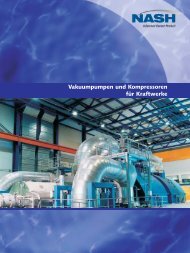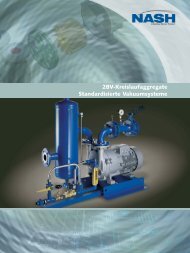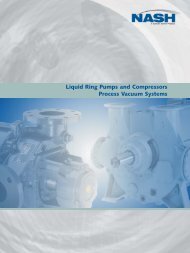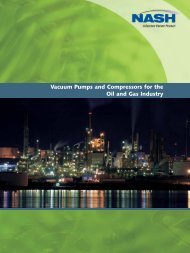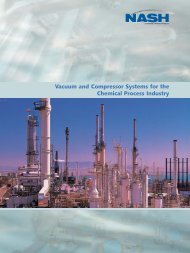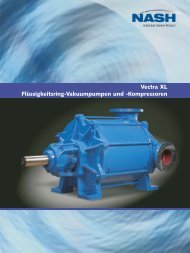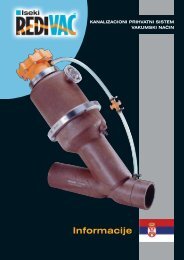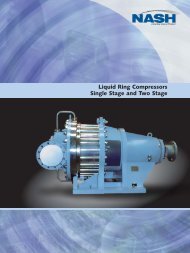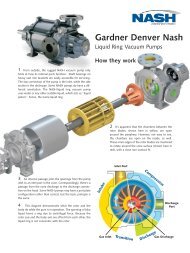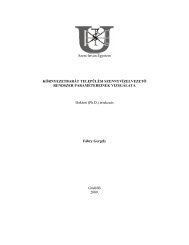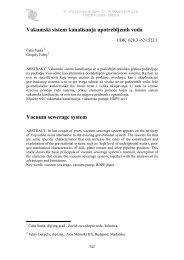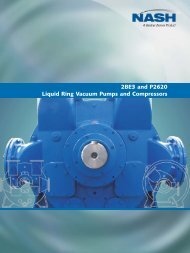introduction
introduction
introduction
You also want an ePaper? Increase the reach of your titles
YUMPU automatically turns print PDFs into web optimized ePapers that Google loves.
SECTION 3<br />
OPERATION OF A<br />
VACUUM SEWERAGE SYSTEM<br />
Vacuum systems can be used to collect a variety of fluids, however they are most commonly used<br />
to collect sewage from within domestic housing developments.<br />
Figure 2 below indicates the typical layout of such a system, the three main components of which are<br />
as follows :-<br />
Valve Chambers / Sumps<br />
These chambers serve two purposes:<br />
1. To collect the effluent discharged from the connecting properties.<br />
2. To allow the collected sewage to enter the sewer network via the Iseki RediVac interface valve.<br />
The Vacuum Sewers<br />
These form the pipe network through which vacuum pressure is transferred to the Iseki RediVac interface<br />
valves within the collection chambers and along which the effluent is transported to the vacuum station.<br />
The Collection / Vacuum Station<br />
This is the heart of the system and is where the vacuum pressure is generated for the whole sewerage<br />
network which allows the effluent to be collected and forwarded to the sewage treatment plant.<br />
COLLECTION STATION<br />
GRAVITY SEWER<br />
COLLECTION SUMP<br />
VACUUM SEWER<br />
Figure 2 Typical Vacuum Sewerage System Layout<br />
9



